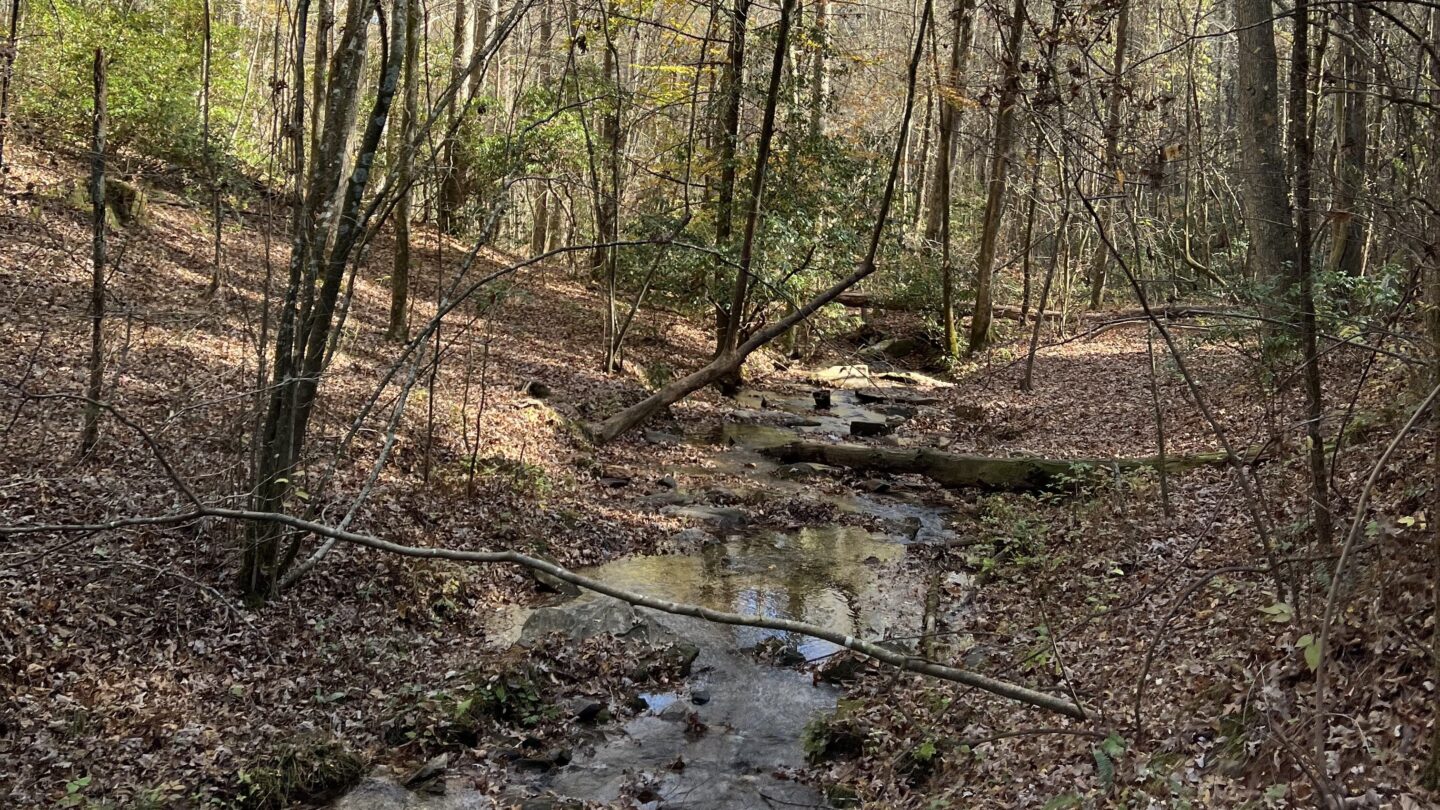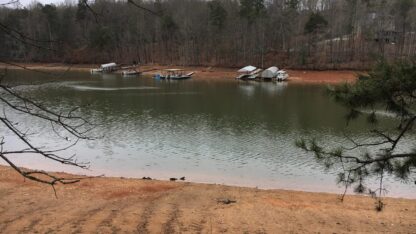Georgia Adopt-A-Stream celebrates 30 years of local residents monitoring streams

In a shallow, rippling stream in Stone Mountain Park, Harold Harbert and his group of volunteers bent over plastic containers, sorting through decaying leaves and picking out bugs.
They’ve found good news: evidence of a healthy stream.
Harbert works for the Georgia Environmental Protection Division and has been with the Adopt-A-Stream program for about 25 years, directing it for 20. In 2023, the program reached the highwater mark of its 30-year anniversary.
On the side of the road, you might see an “Adopt A Stream” sign telling you somebody or some organization has taken a waterway under their wing. But this isn’t just donating money or getting a sign — it means locals have trained and volunteered to regularly check in on the stream, monitor it for pollutants or indicators of health and submit that information to a centralized database.
On this day in Stone Mountain, Harbert was conducting a training for four participants getting certified to lead their own Adopt-A-Stream trainings. In this case, they’re covering macroinvertebrate monitoring.
They dump dirt and decaying leaves into plastic bins and begin to sort.
“Time to pull out some of our technical tools, otherwise known as a spoon,” Harbert said. Using white plastic spoons, they gingerly pick through the muck and pull out insects like caddisflies.
The course requires volunteers to learn how to identify 20 types of macroinvertebrates. These tiny critters — insects, crustaceans and mollusks without backbones but large enough to be seen by the naked eye — are indicators of stream health. Some of these creatures can only survive in high-dissolved oxygen water, and their presence would indicate the stream is in good shape.

This lets monitors like Harbort’s extract information about how fish and other life are doing in the stream. From there, they must deduce the cause of certain conditions. Anything from too much heat, nutrient runoff from fertilizer or farms, or too much dirt or sedimentation from construction sites can affect water quality and the types of critters present.
“This is not for the poor of sight,” said Deandre Presswood, a program assistant for the Adopt-A-Stream program at the EPD and a geoscience masters student at Georgia State studying hydrology.
He said a big part of his job at the EPD is updating the website where all this information gets logged. He’s gone through all the Adopt-A-Stream trainings and workshops like this one that coach him to instruct trainings. Understanding how all that data is collected and how volunteers are collecting it, he’s looking to make the website more user-friendly and a better place to enter and read all data for streams throughout the state.
“This data is only as good as it is if you’re able to access it easily, view it and understand it,” Presswood said.
While the water quality monitoring program fits with his line of study and work, Presswood said anybody can participate and nobody needs to be an expert — that’s what the trainings are for.
“You don’t need to necessarily know anything when you show up — if you’re just interested and engaged and you pay attention in the workshop or initial training, you’ll be certified to go out and do this on your own,” Presswood said.
The program is integral to catching everything from sanitary sewage pollution to larger patterns of poor stream health over time. It provides the local and state government with data for the incredible number of creeks, streams and lakes that weave throughout the city and state.
Many times, when the EPD is citing a municipality or business for not complying with laws, the Adopt-A-Stream volunteers are the ones who warn them something is wrong.
That’s why James Moore, Chamblee’s stormwater manager, said he loves the program as a way to connect residents with the natural resources they love and the infrastructure systems that serve the residents.
“In doing stormwater management, part of my job is to make the connection for people between the physical infrastructure that they pay the city to maintain and the environment that its supposed to be protecting, and Adopt-A-Stream does that better than anything I’ve found,” Moore said.
To learn more about the Adopt-A-Stream program and how to participate, visit https://adoptastream.georgia.gov.








